CHARLES CURTIS DRIVING TOUR
Use this arrow to learn more at each stop.
The Charles Curtis Driving Tour includes 9 stops across Topeka, Kansas. After reaching the end of the introduction, scroll down to begin the tour.
Charles Brent “Charley” Curtis was born January 25, 1860, in the Kansas Territory. (Kansas became a state a year later.) He was born on what was referred to as the “Half-Breed” land allotments on the north side of the Kansas River, across from Topeka. His father, Capt. O. A. “Captain Jack” Curtis, was of white/European descent. His mother Helen Pappan Curtis had French/Kaw/Osage/Pottawatomi ancestry and it was through her mother that the land had been inherited. Curtis was descended from Pawhuska, an Osage chief, and his son-in-law, White Plume, a Kaw chief.

Pawhuska (Courtesy KSHS)
The Pappans operated a lucrative ferry business carrying travelers on the Oregon Trail. Curtis’s mother died when he was three years old and his father joined the Union Army soon afterward, leaving the toddler to be raised by his grandmothers, Julie Gonville Pappan and Permelia Hubbard Curtis.


Curtis’s grandmothers (Courtesy KSHS)

Curtis and Hoover (Courtesy KSHS)
Curtis is the first person of significant Native American ancestry to serve in that high office.
Could it have ever entered the thoughts of Pawhuska, the famous chief of the Osage tribe of Indians, while struggling against the encroachment of the white children of the invincible and al-powerful being he knew as the Great White Father, that one day a direct descendant of his might become the Great White Father?
– Waynesville (NC) Mountaineer, April 26, 1928
– Waynesville (NC) Mountaineer, April 26, 1928
If I have been of any service the thanks is due to Julie Pappan, Indian woman of the Kaw tribe. My two grandmothers, I have always held, were responsible for any success that I may have attained.
– Charles Curtis
– Charles Curtis
Stop 1
Great Overland Station
200 NW Railroad St. Topeka, KS
DIRECTIONSGreat Overland Station
200 NW Railroad St. Topeka, KS
In the 1840s, French-Canadian brothers Louis, Joseph, and Ahcan Pappan moved with their French/Kaw/Osage wives to sections of land on the north side of the Kansas River, present-day North Topeka. Their wives were also sisters and they had inherited the land through an earlier treaty. The Pappans soon began operating a ferry to carry travelers on the Oregon Trail. According to Curtis himself, the ferry would have lined up with Harrison Street as it meets the river and the cabin where he was born was located nearby.

Pappan Ferry (Courtesy KSHS)
When O. A. Curtis came to Topeka from Indiana in the 1850s, he purchased land from those families and his parents followed soon afterward. Curtis Family holdings grew and were later divided among descendants, many of whom still reside in North Topeka.
Note: Although the cemetery is on private property, it can be seen around this site. There is a walking path leading up the nearby hill to the fenced cemetery.
Stop 2
Curtis Family Cemetery
8 Kansas 7, Bonner Springs, KS
DIRECTIONSCurtis Family Cemetery
8 Kansas 7, Bonner Springs, KS
Curtis’s parents, Oren Arms and Helen Pappan Curtis, and paternal grandparents, William and Permelia Curtis, are buried here along with other family members. The cemetery is private property and may only be viewed from outside the fence.

Curtis Family Cemetery (Courtesy Washburn University)
Curtis’s parents, Oren Arms and Helen Pappan Curtis, and paternal grandparents, William and Permelia Curtis, are buried here along with other family members. The cemetery is private property and may only be viewed from outside the fence.

Captain Jack Uniform (Courtesy KSHS)
Grandmother Curtis ruled the family. So strong in mind and body, yet so gentle, she brooked no opposition. Not that any of us wished to oppose her; if we strayed momentarily, by accident or inadvertence, from the fold of her orthodoxy, she needed only to remind us of our allegiance, which lasted to her death at the age of ninety-six years and has continued in memory to this day. And we loved her as much as we admired her Spartan character. She was a Methodist. She was a Republican. I think she regarded being both a Methodist and a Republican as essential to anyone who expected to go the heaven.
– Permelia “Dolly” Curtis Gann
– Permelia “Dolly” Curtis Gann
Stop 3
Old Prairie Town at Ward-Meade Historic Site
124 NW Fillmore St. Topeka, KS
DIRECTIONSOld Prairie Town at Ward-Meade Historic Site
124 NW Fillmore St. Topeka, KS
Curtis’s parents, Oren Arms and Helen Pappan Curtis, and paternal grandparents, William and Permelia Curtis, are buried here along with other family members. The cemetery is private property and may only be viewed from outside the fence.

Old Prairie Town at Ward-Meade (Courtesy FFNHA)
Anthony and Mary Jane Ward purchased this land in the 1850s and Anthony built a cabin and a shed for his wheelwright business. The ferry crossing was near their cabin and kept Anthony busy repairing wagon wheels for the immigrants. It was said that Mary Jane kept a candle burning in the window at night for travelers to find them. The mansion was completed in 1874. This would have been a familiar site to Curtis in his childhood and throughout his life.
Stop 4
Constitution Hall
429 S Kansas Ave #427, Topeka, KS
DIRECTIONSConstitution Hall
429 S Kansas Ave #427, Topeka, KS
Curtis had been living with his maternal grandparents on the Kaw Reservation at Council Grove years for three years, enjoying a carefree boyhood. He remarked that he could not remember a time when he could not swim or ride a horse. That happy interlude ended in June, 1868, when Cheyenne warriors appeared to attack their old enemies, the Kaws. Curtis, only eight years old, accompanied a messenger to Topeka to alert Governor Samuel J. Crawford of the situation. At that time, the statehouse was under construction and Constitution Hall, built in 1855, housed the government offices so it is likely that this is the location where they found the governor. His grandmothers decided then that Curtis would return to Topeka to lived with his paternal grandparents. Curtis later told a reporter that upon his return to Topeka, he began his life as a jockey and was very successful until Grandmother Curtis forced him to stop at the age of 16 and further his education.
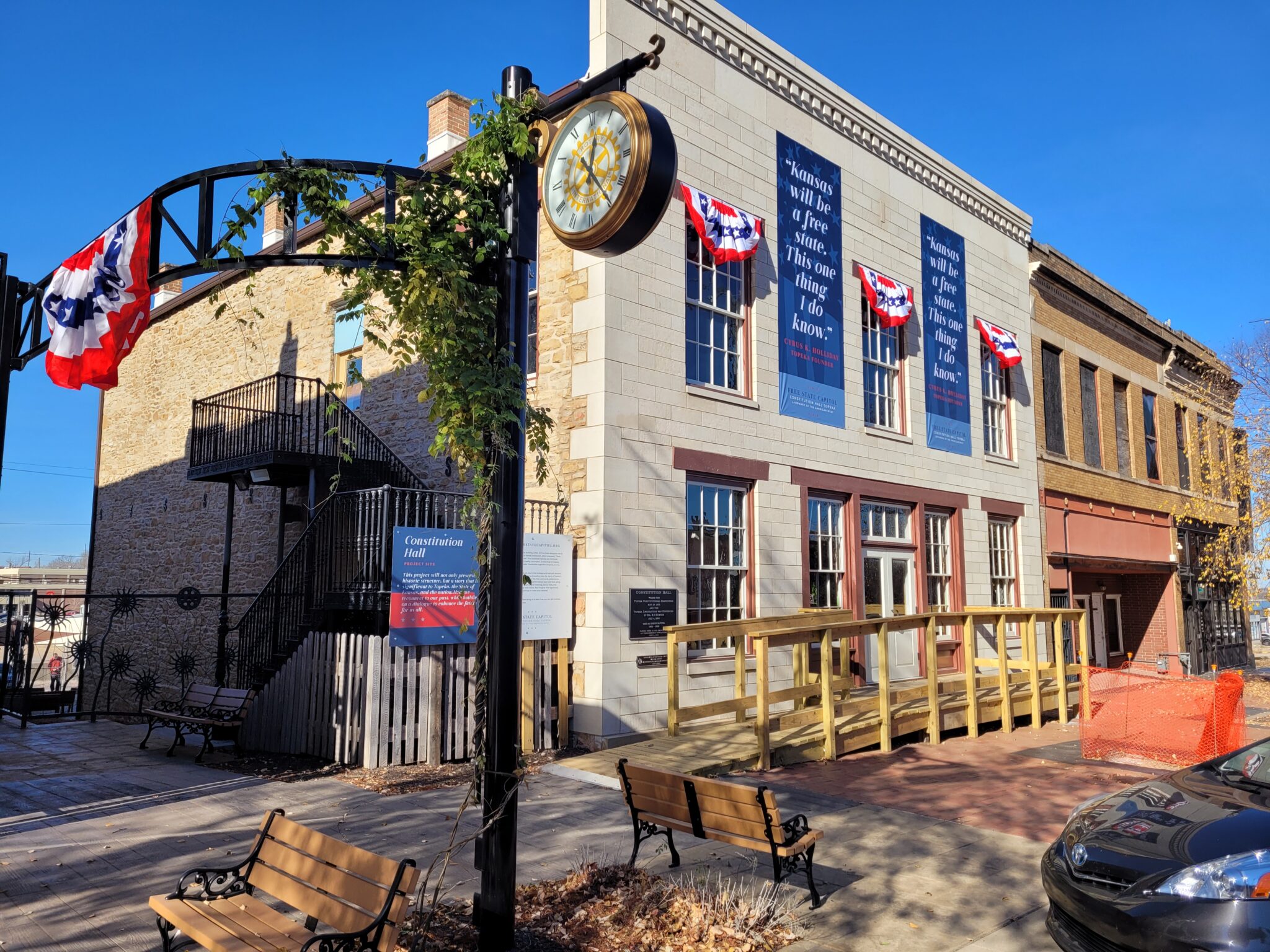
Constitution Hall (Courtesy theclio.com)

Gov. Crawford (Courtesy KSHS)
My Grandmother Curtis, there in Topeka, talked to me always of the value of education.
– Charles Curtis
– Charles Curtis
I have always loved horses. I think a good thoroughbred is about the finest animal that one can see or have. To me there is nothing more exciting or thrilling than a good race.
– Charles Curtis
– Charles Curtis
Stop 5
Charles Curtis House Museum
1101 SW Topeka Blvd, Topeka, KS
DIRECTIONSCharles Curtis House Museum
1101 SW Topeka Blvd, Topeka, KS
Built in 1878 for Joseph Wilson and believed to have been designed by renowned architect Seymour Davis, the house is classified as Eclectic Italianate. Curtis purchased the home in 1907 and it was the scene of many grand occasions and often served as his campaign headquarters, as well as the center of victory celebrations when it was festooned with flags and banners. The house remained in the family until 1937. In addition to the three Curtis children, Curtis’s half-sister, Permelia “Dolly” Curtis, joined the household after the death of her mother. She became her brother’s secretary, campaign manager, and eventually his official hostess. It was here in 1915 that Dolly married Edward Everett Gann. There were 400 guests in attendance. Curtis escorted Dolly down the staircase to meet her groom.

Curtis Home (Courtesy Curtis House Museum Facebook Page)

Curtis House & Campaign Headquarters (Author Collection)
On the occasion of his election to the vice-presidency in 1928, thousands of people filled the street between the Curtis Home and the Kansas statehouse.

Charley Family (Author Collection)
The house was restored by Don and Nova Cottrell.
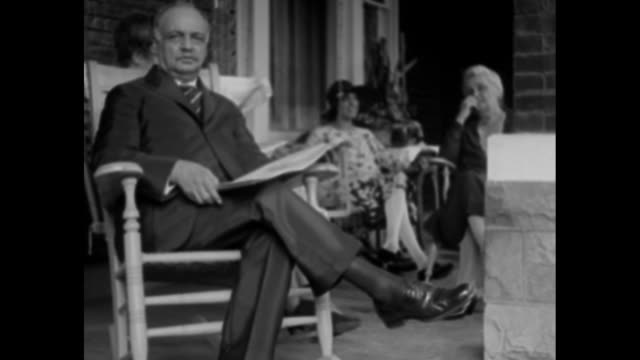
Charley on Porch with Paper (Author Collection)
“When Mother fell ill, one of her friends sent for me, held me close in her arms, and told me my mother would leave me very soon. I went home and looked at Mother, so white, lying on her pillow, and knew it was true. Not long afterward she slipped away. My brother Charles came for me, and I went to live with him and his wife, who was from that day a real sister to me.”
– Permelia “Dolly” Curtis Gann
– Permelia “Dolly” Curtis Gann
Stop 6
Kansas State Capitol
SW 8th &, SW Van Buren St. Topeka, KS
DIRECTIONSKansas State Capitol
SW 8th &, SW Van Buren St. Topeka, KS
Construction began on the statehouse in 1866 and took 37 years to complete. The 304-foot-high structure is taller than that of the United States capitol. As a young man, Curtis drove a horse-drawn taxi and many lawyers and legislators were his customers. Often, he was found under a streetlamp near the capitol, studying a book of law and waiting for his next fare.
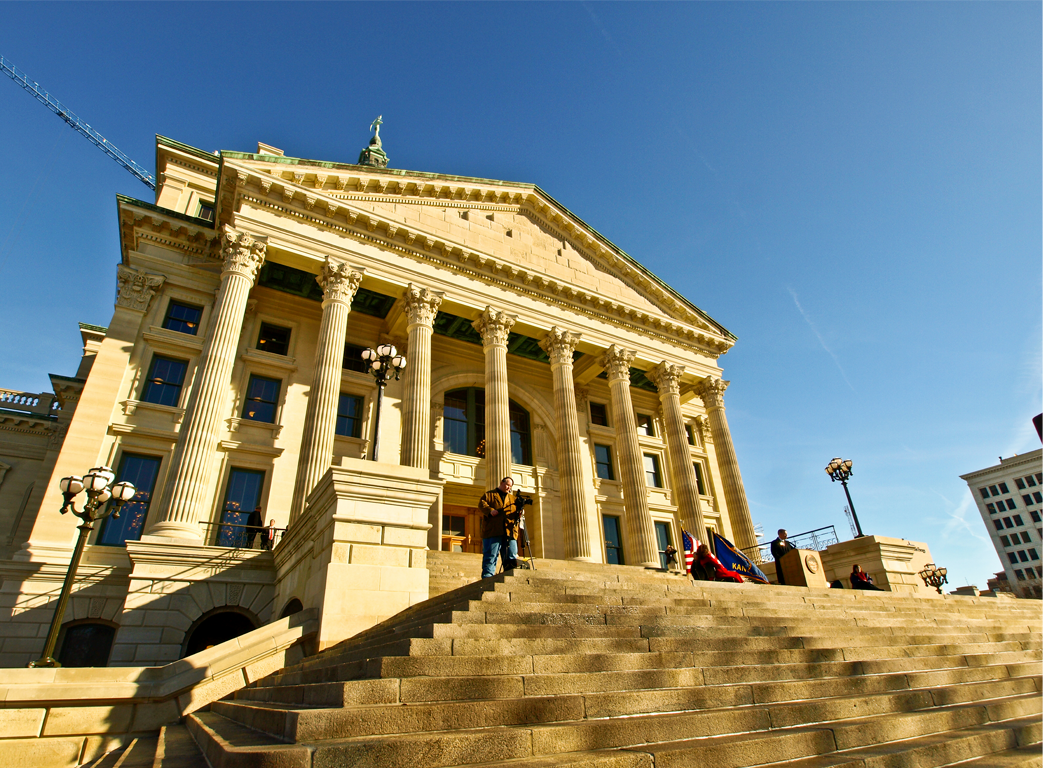
Topeka 150 (Courtesy Michelle Martin)
For four solemn years in Topeka I drove my hack by night and studied. Standing by the curb waiting for fares I had a book in my hand, usually a law book. During the long hours of the night I kept the light on my cab burnished brightly for the reading. Lingering down by the station for the incoming train I filled the time with study. As I waited about the bright lights that made up the night life of the town, a book was always present. Much of my time off duty was spent in the office of Mr. [A. H.] Case.
– Charles Curtis
– Charles Curtis
Curtis had been a widower for twelve years when he passed away at his sister’s home in Washington, D. C., on February 8, 1936. Still active in politics, he was readying for the presidential campaign of Kansas Governor Alf Landon. Curtis was brought back to Topeka where he lay in state in the rotunda of the statehouse and his funeral was conducted there. Governor Landon and Senator Arthur Capper paid tribute to their colleague. Thousands paid their respects to the man who had risen to such success but was known among his fellow Kansans as “Our Charley.” A bow and two arrows honoring his Kaw heritage were placed upon the coffin by “Chief Dearfoot of the Apache tribe.”
City schools were dismissed. Kansas National Guard Officers flanked the coffin, an honor never before afforded a public official.
The people of Kansas will receive the unexpected news of Senator Curtis’ death with deep sadness. His service for Kansas and the nation was a useful one which occupied his splendid facilities for the best part of two generations. Countless friends find comfort in the realization he had completed a career distinguished in every way.
– Governor Alf Landon
– Governor Alf Landon
I am deeply distressed to learn of the sudden passing of my old friend, Charles Curtis. Whether they knew him as a senator, a vice president of the United States, or as the man that he was in his own right, his legion of friends will remember him, always affectionately, and will mourn his passing.
– President Franklin D. Roosevelt
– President Franklin D. Roosevelt
He was a great leader of our people. He was a friend to all Indians and we asked his advice on almost everything we did because we knew he had our interests at heart.
– Mose Dellmard, Assistant Chief of Kaw Council, 1936
– Mose Dellmard, Assistant Chief of Kaw Council, 1936
In 2002, the sculpture Ad Astra by Richard Bergen was placed atop the capitol dome. It depicts a Kaw, or Kanza, warrior aiming his arrow toward the north star, symbolic of finding one’s way. The sculpture’s name reflects the state’s motto, Ad astra per aspera, “to the stars through difficulties.”
Stop 7
Charles Curtis State Office Building
1000 SW Jackson St. Topeka, KS
DIRECTIONSCharles Curtis State Office Building
1000 SW Jackson St. Topeka, KS
There have been other memorials to Curtis over the years, including Curtis Junior High School in North Topeka, in service from 1927 to 1975 and since converted to apartments. Curtis Street in North Topeka was named for his Grandfather Curtis.

Curtis Office Building (Courtesy KSHS)
There have been other memorials to Curtis over the years, including Curtis Junior High School in North Topeka, in service from 1927 to 1975 and since converted to apartments. Curtis Street in North Topeka was named for his Grandfather Curtis.
When this state office building opened in 2001, this was the first such new building in Topeka in 25 years.
Fifty years from now, a Kansas school child or a Colorado tourist should be able to walk into the lobby of a 50-year-old state building catty-corner from the Capitol and ask, ‘Who was Charles Curtis?’ And we should be all too happy to tell them.
– Topeka Capital Journal editorial, December 11, 2001
– Topeka Capital Journal editorial, December 11, 2001
Stop 8
Charles Curtis statue
S Kansas Ave. btw. 8th St. and 9th St. Topeka, KS
DIRECTIONSCharles Curtis statue
S Kansas Ave. btw. 8th St. and 9th St. Topeka, KS
Artist Elizabeth Zeller created this sculpture of Curtis as he would have appeared when he was a seasoned and successful public servant. The artwork joins that of Curtis’s contemporaries Cyrus K. Holliday and Harry Colmery. When the sculpture was dedicated in 2016, a representative of the Kaw Nation presented a ceremonial blanket to a senior executive from the Federal Home Loan Bank. Curtis supported the creation of the FHLB system in 1932 and was responsible for establishing the Topeka location.

Curtis Sculpture (Courtesy KSNT TV)
Stop 9
Historic Topeka Cemetery
1601 SE 10th Ave #1, Topeka, KS
DIRECTIONSHistoric Topeka Cemetery
1601 SE 10th Ave #1, Topeka, KS
Upon entering the cemetery grounds, you will see the Franklin Crane home, built in 1855, and the barn across the driveway. Topeka’s founding fathers came to Dr. Crane and asked him to create a garden cemetery to serve the growing town. A race track was on or near the property and Curtis raced horses there. In his youth, Curtis may have spent time in this barn as the jockeys often spent the night upstairs. In addition to Charles and Anna Baird Curtis, many people with ties to Curtis rest here, including his only full sister, Elizabeth Curtis Colvin and her husband Jerome.

Topeka Cemetery House & Barn (Author Collection)
Further into Topeka Historic Cemetery
MAPSection 80
Charles & Anna Baird Curtis

Curtis purchased this plot when his wife passed away in 1924. The site was improved and re-dedicated in 2002.
A.A. Hurd
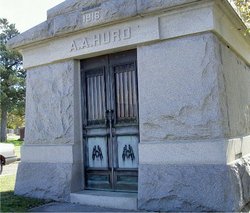
Mausoleum in circle directly across from Curtis’s grave. Hurd handled Curtis’s business affairs in Kansas while Curtis was in Washington, including the funeral arrangements for Curtis’s father in 1898.
Jerome & Elizabeth Colvin

Sister and brother-in-law.
Section 72
David Overmyer

Attorney and Curtis’s law partner in the 1880s.
Section 67
Dr. Bernard Eastman

Superintendent of the Topeka State Hospital when Boston Corbett was committed to the institution in 1887. Corbett, the soldier that had killed President Lincoln’s assassin, John Wilkes Booth, was working at the Kansas Statehouse when he became unhinged and waved a gun, threatening the legislature. Curtis was county prosecutor at the time and tried Corbett. The court declared Corbett insane.
Section 58
Sen./Gov. Arthur Capper

Neighbor, friend, and fellow senator. The first Kansas governor born in the state.
Gov./Gen. Samuel Crawford

Elected during the Civil War while on the battlefield, Governor of Kansas from 1865-1868.
Section 51
Section 51
Capt. John Guthrie

Judge while Curtis was Shawnee County Attorney. Guthrie, OK, is named for him.
Section 37
John M. and Jane Baird

Curtis’s in-laws, natives of Pennsylvania.
J.H. Foucht

Curtis’s school teacher when he returned to Topeka as a boy, speaking French and Kaw. Foucht taught him to read and write in English.
Section 19
J.C. Wilson

Had the original part of the house at 1101 Topeka Boulevard built.
Mausoleum Row
The Reddens

Emma Redden received the house at 1101 as a wedding gift from her father. She and her husband, Dr. J. W. Redden, added the Moorish dome to the house and interior plaster work. The Curtises later purchased the home from the Reddens.
Section 12
Aderial Hebard "Hib" Case

Pioneer attorney who mentored Curtis in his early law career and later made him a partner. It was Case’s wife, Lucia, who recognized Curtis’s ability when she heard him speak at Topeka High School and urged her husband to employ him.
Linnaeus Thomas

Curtis’s teacher and principal at Topeka High School in the 1870s.
Section 8
Cyrus K. Holliday
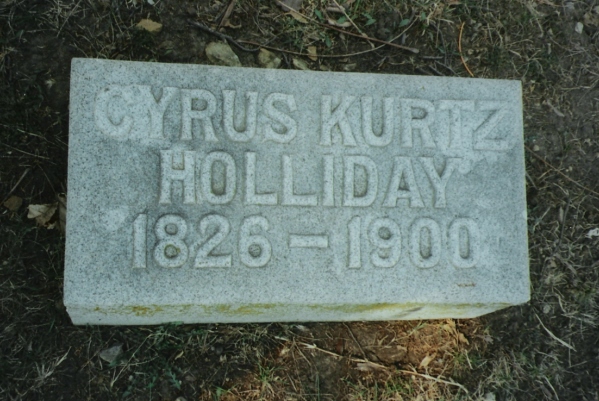
Founder of Topeka; founder of Atchison, Topeka, Santa Fe Railroad; 5-time Mayor of Topeka; Adjutant General during the Civil War; Well acquainted with Curtis Family.
Section 7
Joseph Middaugh

Partner in the ferry business with O. A. Curtis.